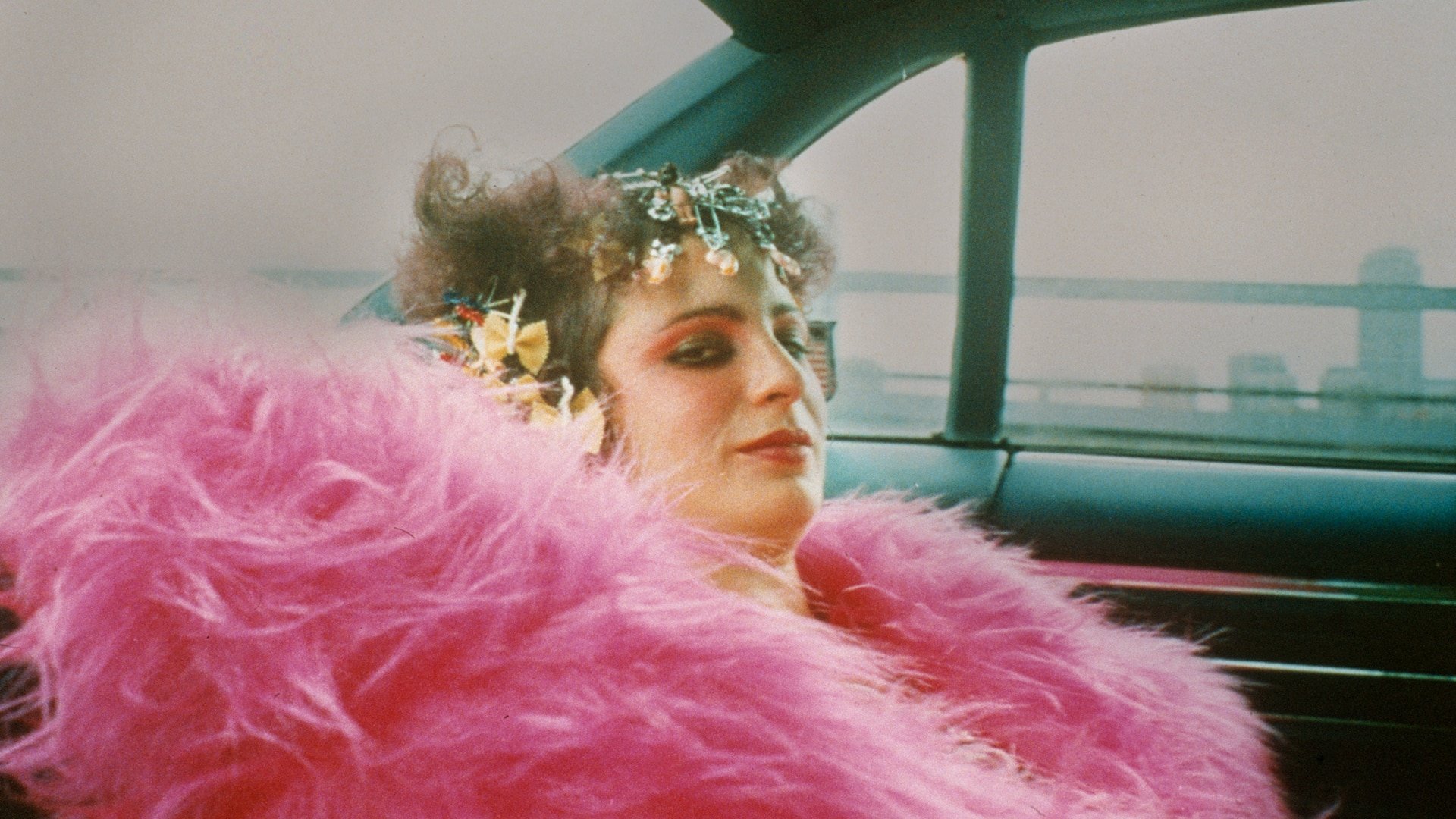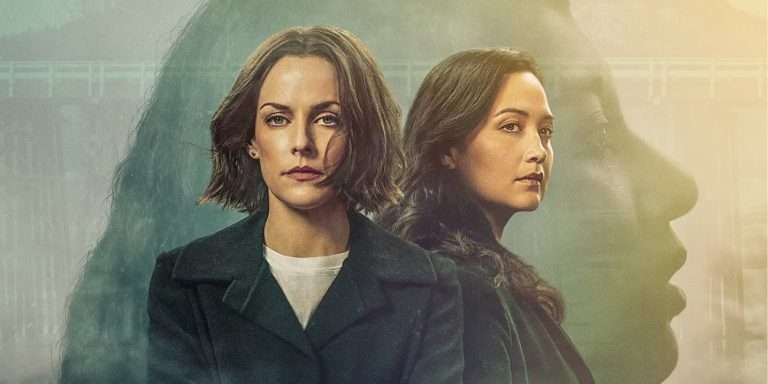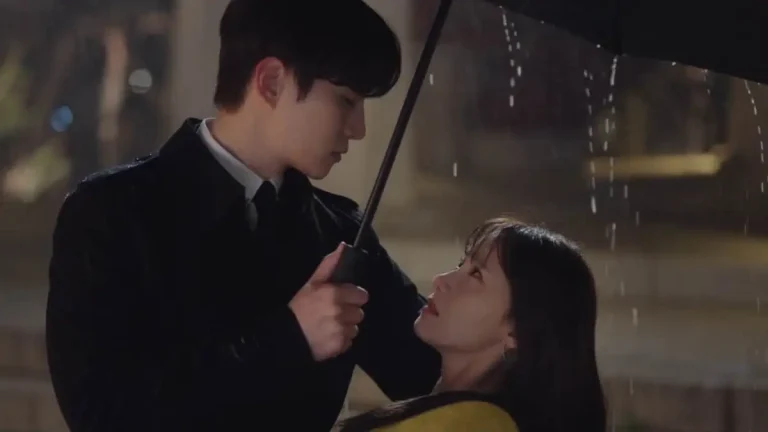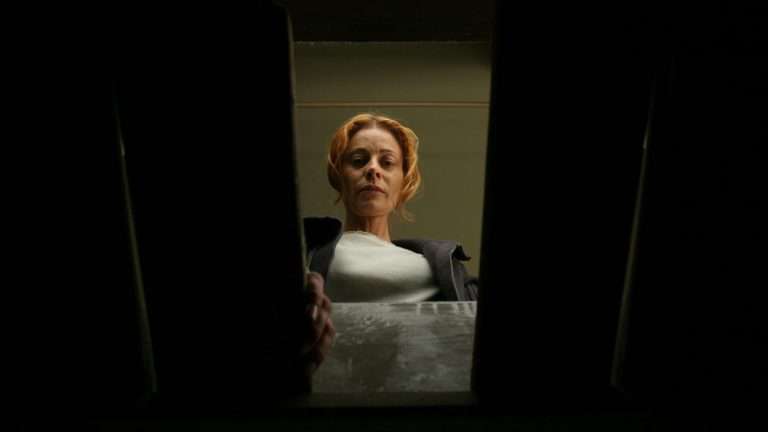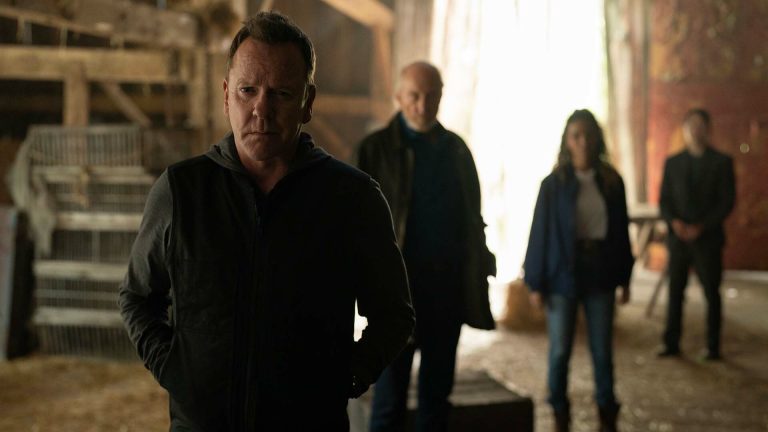All the Beauty and Bloodshed (2022) Documentary Explained: The documentation of the life of Nan Goldin, the photographer known to explore the LGBT subcultures, queer and conventional relationships in all its dioramic forms, intimacy through an undisturbed grace and most notably a hard look at the HIV/AIDS crisis, would have been an impressive documentary by itself. But Laura Poitras, known for her multi-timeline hopping and paranoia-inducing documentaries (Citizenfour), goes for something far more audacious and complex in structure, perhaps to explore Goldin’s own perspective as she documents Goldin’s efforts to combat the opioid crises with the help of her foundation P.A.I.N. (Prescription Addiction Intervention Now)
All the Beauty and Bloodshed (2022) Context: Opioids and the opioid crisis
Opioids consist of moderate to strong painkillers, the most popular of them being Oxycodone (sold as Percocet or Oxycontin), hydrocodone (Vicodin, Norco), and Fentanyl. The latter is an extremely strong painkiller whose synthesis resembles that of morphine or heroin, thus making all the above drugs chemical cousins. The liberal availability of these drugs and their potency has made them popular as medical treatments.
Still, their over-usage has the potential to cause addiction and overdose, making them popular as recreational drugs. Its effects on the medulla oblongata, especially in the respiratory center, present a high risk of hypoventilation, respiratory failure, and death. Opioids are highly effective in curing acute pain. But it is debatable whether they are effective in combating relentless, debilitating pain like IPD (Intractable Pain Disease), as the risks might outweigh the benefits altogether.
According to The Atlantic, more than 453,300 deaths occurred throughout the United States due to the Opioid Crisis from 1999 to 2006, which had been theorized to have caused due to over-prescription of opioids in the late 1990s. An opiate addiction begins when a patient begins to use opioids beyond the prescribed amount by a medical professional or if the opioids are over-prescribed by a medical professional. The reasons for this over-usage could vary from the necessary, like minimizing pain, to the addictive, like inducing a feeling of euphoria. This overuse leads to the development of tolerance to a crippling dependency when a person relies on one opiate to prevent withdrawal symptoms.
The opioid crisis could be described as a “uniquely American problem” as the structure of the healthcare system in the United States could cause many citizens not to qualify for government programs and have to opt for private insurance. The said private insurance barely meets the requirements to buy a pill than to opt for expensive therapies. Thus, the citizenry desires to find a pill for any problem, even if the better alternative might be exercise, an improved diet, and stress management. Pills like opioids are far more inexpensive than alternative interventions like physical therapy, which might not be affordable beyond a specific stratum of the American populace.
Recommended Read: 15 Great Films with Themes of Addiction, Drugs, and Alcoholism
Goldin’s efforts in combatting the Opioid Crisis
While Nan Goldin had always been a vocal activist in the past, going back to the 80s when she was involved in documentation of protests against the HIV/AIDS crisis, she had a close call with a drug overdose, where she had snorted fentanyl. As she describes quite vividly to Poitras while we see pictures of forests amidst the night sky, photographed with a sensual blur, “she wasn’t ready for Fentanyl.”
She described being on a roller coaster, being out like a light, coming back, and then being out again. It is almost akin to an out-of-body experience, and then she recalls that she had returned to life on her own and was glad for it. This is described in the documentary in Chapter 5, titled “Escape Hatch,” which ends with a segment of image slideshows of blurs of images and colors signifying a haze as time passes in a blur of drug use and emotional loss.
Goldin’s recounting of her addiction to Oxycontin was published in Artforum in 2017, and excerpts from that article have been repeated by Goldin verbatim in “All the Beauty and Bloodshed.” As she described in testifying before the House Committee in 2020, whose footage is also included in the documentary, her addiction to Oxycontin began in 2014, when she had been prescribed it in surgery.
As had been described above, subsequent usages lead to a tolerance that dovetails to a dependence. When she ran out of money from a private endowment, she turned to the stronger chemical cousins, leading to her out-of-body near-death experience with Fentanyl. But that experience, along with the deaths and addiction of several of her close friends, forced her to recontextualize her present work along with her current predicament.
Many of the prestigious museums throughout the United States and around the world have received their fair share of donations from the Sackler family. The Sackler family is the same family who had founded and owned Purdue Pharma. They also were responsible for profiting off the opioid crisis due to the over usage of Oxycontin, which had been the brainchild of Purdue Pharma itself. In a twisted way, both Goldin and the Sackler family used unconventional methodologies to plant their feet inside the art world – she by fellating a cab driver to convince him to take her to an interview, the Sackler family by profiting off the Opioid Crisis, resulting in the deaths of half a million people.
It is evident in the documentary that understatement or ignoring the addictive qualities of Oxycontin had been one of the primary causes of the Opioid Crisis, and Purdue Pharma had been largely responsible for funding that the narrative of opioid addiction is a completely overblown concern.
The activism of Nan Goldin thus is reignited here, which kicks off the documentary by showing her and her fellow activists of P.A.I.N organizing peaceful protests at art institutions to stop them from accepting donations from the Sackler family. It is one of these key instances where calling an activist and her cause “brave” holds merit, especially because she is protesting against the institutions responsible for housing her art and exhibiting it, thus managing to patronize her living.
The details of the Sackler family and their “laudable benevolence” is described in striking and incisive detail in journalist Patrick Radon Keefe’s New Yorker article titled Empire of Pain. It is important to point out that Radon Keefe’s article also showed how to combat the debilitating withdrawal of Oxycontin, the patient would turn to its “chemical cousin” heroin as a substitute when prescription painkillers become too difficult to obtain. But this journalistic piece against the Sacklers coincided with Goldin raising her activism badge high in the air.
When interviewed in the documentary, Radon Keefe admits that he had initially been dismissive of her gung-ho attitude when he had first met her, patronizingly saying, “Good for you.” The March 10, 2018 protest by Goldin at the Metropolitan Museum turned the popular “Temple of Dendur” exhibition into a symbolic bas-relief art form, where the protestors lay on the floor of the museum chanting, “Slackers lie, Thousands Die.”
The documentary follows the protests by Goldin and her fellow activists at P.A.I.N., the journeys interspersed at the end of each of the chapters chronicling Goldin’s personal history. It also definitely feels like an intentional choice of placing these moments as mirrors of the part of life that Poitras is exploring and, as a result echoing Goldin’s past, be it the HIV Crisis or her “Against the Vanishing” exhibition” These usually showcased the similar protests Goldin conducted at the Guggenheim Museum and the Louvre.
The documentary showed through interviews with P.A.I.N member Megan Kepler and footage of their meetings – the camaraderie shared between souls united by a single cause, the general fear exhibited by the protesters when they realize they are under watch by the Sacklers, a fear shared by Radon Keefe as well. This was followed by Goldin testifying at the House Committee in 2020, where she shared details of her Oxycontin addiction in public and how she stays clean with the help of a drug called Buprenorphine. She believes that it will also help address the stigma of getting out of drug addiction and mental illness through medical treatment. It finally dovetails into a provisional triumph when on December 9, 2021, it was reported that the Sackler names would be removed from the Met Museum due to the opioid ties.
This is followed after the skype trial of the Sacklers, which ultimately feels melodramatic and cheap, an ironic statement considering Poitras is exploring Goldin’s hard-scrabbled life, which would be rife for melodrama but translates to meaningful poignancy instead. This also brings to mind, perhaps by design, Poitras’ focus on Goldin herself, which ultimately doesn’t leave much room for an exploration of the Sacklers’ perspective, the generational guilt of it all.
Whether that would have translated well on the screen or my personal biases against any form of capitalistic authority notwithstanding, a bit more nuanced exploration would have perhaps offset the melodramatic segmentation of the Sacklers. The criticism, however, seems to focus on Poitras’ attempt to connect present-day events with Goldin’s already interesting and chequered snapshot past. While it eventually comes together at the end, it never really rises above feeling like a forceful narrative crutch in connecting the two halves of this documentary.
A chronological retelling of Nan Goldin’s life through snapshots and voiceovers
Poitras’ choice of using Goldin’s photographs as a snapshot to chronologically retell Goldin’s life and the life of the country, too, as a result, feels like a true intermingling of two voices. It never really feels the documentarian shutting or blotting out the singular voice of an artist. On the contrary, this results in a singularly defining work of engagement, emphasizing the true meaning of “collaboration”
Goldin’s thoughts about the difference between story and memory are also interesting – especially how she considers the tangibility of a real memory with its smell and sound, and is inherently more complicated than what a picture represents – a snapshot of a moment in time with an inherent simulation already ingrained within it. Thus the truth lies somewhere between the muddiness of reality and story – which Poitras explores by utilizing Goldin’s voiceover as the veil puncturing through the picture-perfect snapshots.
We are also shown snapshots of images from “The Ballad of Sexual Dependency,” from which the majority of images would be shown as the chronological recounting of Goldin’s life. Originally devised as a slideshow set to the music of Velvet Underground, James Brown, Nina Simone, and others who are considered benchmarks of the avant-garde movement, it works as an autobiographical retelling of Goldin’s experiences at the No-wave music art scene.
It was an exploration of the queer subculture of the 1970s post, the Stonewall riots, the Bowery neighborhood, and its liberal delving into Heroin while also exploring Goldin’s personal and love life. While we can call “All the Beauty and the Bloodshed” a companion to “The Ballad of Sexual Dependency,” the documentary feels more exhaustive and far more of an inward exploration simply because of Goldin’s own articulation of these events.
The first chapter, titled “Merciless Logic,” explores Goldin’s sister Barbara through a lens resembling hero-worship. Goldin informs us of Barbara’s first lesson to her “about the banal and deadening grip of Suburbia.” The phrase is delivered with a cadence of a woman having gone through crucibles none of the viewers would be able to imagine. That cadence remains consistent – a calm, matter-of-fact tonality, choosing to break rarely when the candid and intimate images start resembling Goldin’s voiceovers of the truth.
Nan chooses to escape from the suburbs once her sister commits suicide, warned by the doctors that she would share the same fate as her sister if she stayed. The rest of the story is a thoroughly absorbing tale of the past while also jettisoning back to the present, the narrative jumping back to and fro. It is only at the end of the final chapter titled “Sisters” that Poitras finally chooses to circle back to Barbara and Goldin’s reconciliation of that loss with revelations about her own family.
It is perhaps not a coincidence that this final exploration of Barbara follows after the Skype trial of the Sacklers, where the families who had lost their children in the opioid crisis finally give their testimonies. The key emotion that circles throughout the present begins as a kernel of vision of the past and finally crystallizes is grief. Barbara’s experiences during therapy and treatment, which had all been recorded, are now shown via snapshots of the therapist’s notes.
We finally get the title of the film from the vision Barbara sees in her Rorshach test – a vision of “All the Beauty and Bloodshed.” There are also moments where Goldin’s quiet voice, with an undercurrent of bitterness, cuts through the matter-of-fact narration of the notes – rebellious adolescence hides Barbara’s attraction, and discovery of her sexuality, impulsive and defiant attitude is the observation because of Barbara’s interest in a negro boyfriend.
The most important piece of information, however, is the therapist’s acknowledgment that both Barbara as well as her mother should be undergoing treatment, and her mother is too sick for Barbara to visit her from the hospital. But perhaps because Goldin has lived a full life of her own, her perspective is much more rounded, and thus her readings of the notes also carry with them a tinge of regret. She acknowledges a family member has sexually abused her mother. This contributes to her reacting negatively when her daughter Barbara reaches puberty, finally hitting like a gut punch.
The final point in the psychiatrist’s notes reads, “She has the normal attitude of an adolescent girl. However, she does not receive parental support”, forcing Goldin herself to acknowledge that her sister did not have a mental illness. She just did not know better, she did not have context. Goldin’s experience through her own colorful life makes her understand how Barabara’s grief stemmed from her search for the proverbial “home” more than the physical one.
Through the exhibition titled “Saints, Sisters, and Sibyls,” we are then shown how Barbara had committed suicide by lying across the railway tracks and how Capitol Limited had applied the brakes but was too late to stop the train. It is hauntingly beautiful how Goldin chooses to show death by focusing on the dead body of a bird lying over the railway tracks.
A prime example of Goldin’s voice cutting through the peaceful conformity and happiness of the photographs and the videos is her scathingly indicting her parents as being unequipped to be termed parents. Reproduction and legacy were expected, but the expectation of nurturing those children to be functional in society is something Goldin believes her parents failed at. This voiceover is occurring while there is footage from her unfinished documentary showing her mother and father dancing happily in their living room. “All the beauty and the bloodshed” indeed.
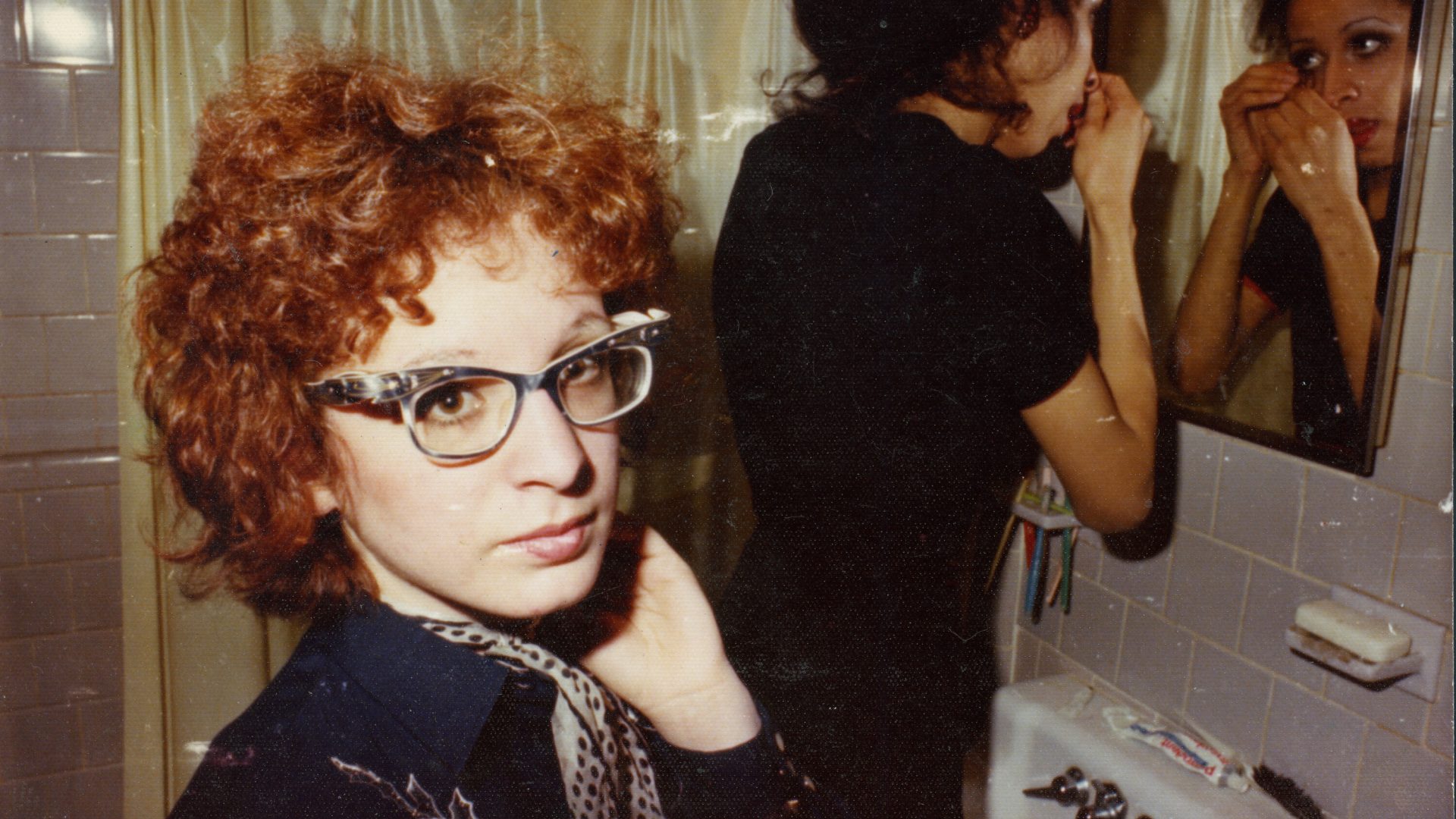
As we enter Chapter 2 – Coin of the realm, we realize, following Goldin through the snapshots of her teenage years as she jumps from foster home to foster home, how these images and trips down memory lane become a therapeutic measure for her, a form of closure. Her remembering that she had projectile vomited across her whole room at her first foster home or her finally realizing her crippling shyness was a result of her sister’s suicide having silenced her.
Until she met David Armstrong, who, for lack of a better world, opened her up to the world with his vivaciousness and his androgynous elegance. In return, she was the first person who understood his queerness without judgment, which led to him naming her “Nan.” As Goldin remarks, “We liberated each other,” the coin of the realm being using humor and wit as survival mechanisms to navigate the harsh world. We also start to realize through Goldin’s articulation how her photographing of moments, be it macro or intimate, was a way for her to develop her own personality and realize her own purpose.
As if time itself announced the change in tonality, the documentary becomes exuberant as “Cheers” by Suicide plays. We transition into the colorful part of Nan’s history – the discovery of her queer tribe through David, moving into Cambridge with them, her first meeting in Provincetown, and her friendship with Cookie Mueller (interspersed with film footage of John Waters’ 1974 film Female Trouble, starring Divine along with Cookie Mueller).
We are then thrown headlong into the joyous color neon-induced haze collection of slides of drag queens in feathers, wild things in the bath, huddling together in a windowless loft as artistry becomes the primordial focus, endless possibility captured through the lens of a camera, as Chapter 2 enters into “The Ballad,” the title of Chapter 3, and what Goldin called The Bowery as, where she had been situated.
The open-ended nature of possibility reminds you of Todd Haynes’ Velvet Underground. In contrast, the careful choice of pictures arranged in a sequence resembling a storyboard reminds you of Chris Marker’s 1962 short film La Jetee, in how connective issues occur within the white spaces of these images. Here the white spaces are represented by Poitras’ careful editing and Goldin’s own articulation, both enhancing and sometimes puncturing the vividness of the images.
We also explore how Goldin enters the art world (the punchline explained before) and how she navigates the queer subculture of the late 70s and early 80s as we are given a whirlwind tour with clips from films like Vivienne Dick and Bette Gordon. As she enters the whorehouse, and “things start getting uglier,” the bar named “The Tin Pan Alley” becomes her salvation.
Being the only bar in Times Square that hires sex workers, Goldin goes to meet the owner Maggie Smith and endears herself to her. She realizes how much of a force of nature and a voice of the community she was. As Maggie Smith’s voiceover almost cuts through the snapshots in these moments, we learn how Tin Pan Alley is effectively a safe space for prostitutes while also helping them navigate out of prostitution should they choose to do so. It was also a common meeting place for those on the radical left – the anarchist movement, the squatters movement, the black movement, etc., reporters from NBC, the IRS, etc. But the bar was controlled by women, with Goldin being termed as “the dominatrix” in the bar.
All these experiences contributed to Goldin’s slideshow, which also was an engagement routine where the audience would comment on pictures they liked, and booed when they wouldn’t, and Goldin would edit them accordingly. Thus her slideshow became more raucous to more intimate when Goldin started inserting photographs of herself engaging in intercourse. That was how “The Ballad of Sexual Dependency” was born, adapting and changing as Goldin showcased them at Underground Clubs.
As the films progressed, and positive appreciation of her art form caused her to share amongst the art world, inevitably leading to detractions from the art world at the time. It makes Goldin feel disillusioned with the art world. Times Square felt real to her, and that’s where she met Brian, the man who would become her boyfriend from 1981 to 1984.
But more importantly, Brian becomes the subject of “The Ballad of Sexual Dependency” and also the man who later beats her up, long after their breakup, due to jealousy. As Goldin describes it, “we didn’t know how to break up,” so she rationalizes that this is the most extreme Brian went to break up. These are the moments where we hear Goldin’s voice crack, we see the matter-of-fact strength of this woman transform as the images become congruous with the emotions of the narrator, finally converging to the image of Goldin’s face with the busted eye.
This is also one of the few times that Poitras’ choosing to intertwine the past unconventionality with the present’s conventionality works to its thematic congruity. Her remark that “She likes to fight” truly matches the overarching theme of “All the beauty and the Bloodshed.” Whether it be fighting against an ex-boyfriend wishing physical harm, a family intent on keeping secrets and maintaining the perfect suburbian facade, or a big pharma company laundering money off millions of deaths through donations at international museums, Goldin’s entire journey had been a long-drawn-out fight.
As she explains it – her father trying to stop “The Ballad of Sexual Dependency” from being published because the text of these images instinctually proves that their parents were responsible for the death of her sister, or Brian trying to stop it as the effects of his violent outburst is all out there to be shown in all its battered “glory,” makes it more radical, “all these men trying to stop it.”
But as the connective tissues go, this is the strongest Poitras makes in connecting goldin’s first regular drug use with the present-day battle against the Opioid crisis. Her choosing to delve into drugs to get more “strung out” is a sharp contrast to the social worker explaining to the activists at P.A.I.N. how to deliver Narcan to someone overdosing. It’s a fascinating narrative choice.
Chapter 4, titled “Against the Vanishing,” is when the documentary also explores the AIDS crisis and the deaths it takes under its name. As she came out of rehab in 1998, Goldin returned to her community only to find a crisis within her community had already risen, and most of her friends were dead or dying. The AIDS crisis is what Goldin chooses to tackle in the first show she ever curates, with the help of David Wojnarowicz, whose text on “The Killing Machine Called America” both sounds like a shocking indictment on the government then and unfortunately holds up a mirror to the present as well.
She requests her friend David Armstrong to pen the catalog for her exhibit, which backfires on them, as David’s catalog openly criticizes Senator Jesse Helms’ views on homosexuality. This causes the NEA to pull out the grant and cancel the exhibit, forcing Goldin to compare these events resembling McCarthyism with its blacklisting of artists. As David Armstrong asks the question of homosexuals dying of AIDS in 1989 or the lack of adequate access to health care and connects it with the reactionary tactics of the NEA, the basic tenet of art comes to the forefront – “Isn’t art political?”.
That is the question that Witness – Against our Vanishing wishes to ask. Four overlapping photographs show a panorama of a crowd outside Artists’ Space at night, where one group files into the gallery through its double doors while others on the sidewalk hold protest signs. This serves as a response to the NEA controversy while simultaneously acknowledging the deaths occurring due to the AIDS crisis as a result of
government neglect.
All the Beauty and Bloodshed (2022): Final thoughts
All the Beauty and Bloodshed is jam-packed and crammed with information, managing to insert a lifetime of experiences of the uniquely colorful and yet hard scrabbled life of Nan Goldin. It also owes its storytelling to a near-perfect collaboration of the documentarian and the artist being documented, as the evocative photographs of Nan Goldin are given the precise editing it deserves to deliver sequential and chronological storytelling with coherence. It is a question of whether the coherence manages to remain consistent during the exploration of the Opioid Crisis through the lens “All the Beauty and Bloodshed” chooses to explore.
As a standalone exploration, it feels rushed, especially towards the end, almost dissolving itself in egregious melodrama. It always depends on an individual to decide how to reconcile his experience and use it as fuel to take up arms in the present day. Goldin is articulated enough to explain her reasons for standing against the Saclers. Still, Poitras choosing the present-day events as a narrative crutch to the ground and retroactively connecting to Goldin’s past feels inadvertently forced.
But at the end of the day, it is overwhelming in what it is trying to convey, a juxtaposition of beauty and sadness, happiness and death, freedom and a fear of the unknown, and it does so in its own elegiac fashion, however flawed it is.

